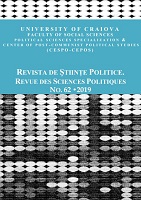Political Communication between Tradition and Actuality
Political Communication between Tradition and Actuality
Author(s): Laviniu Lăpădat, Maria-Magdalena LăpădatSubject(s): Communication studies, Politics and communication, Theory of Communication
Published by: Editura Universitaria Craiova
Keywords: developing the advertising principle; the public use of reason; context and space of human interaction;
Summary/Abstract: The present age may perhaps be the era of space, public space, and public communication in general. We are in the age of simultaneous, juxtaposing, of our neighbour and the distance, of the join, of the dispersed. We are at a time when the world perceives itself less, I think, as a great life that would develop over time, as a network linking points and waving its labyrinth. Today's dismay concerns fundamentally the space, communication and relationships that take place between individuals or organizations far more than time; time probably appears only as one of the possible distribution games between elements that are distributed in space. In spite of all the techniques that invade him, despite the whole knowledge network that allows its determination and formalization, contemporary space is perhaps not entirely desacralized - unlike, of course, time that was desacralized in the nineteenth century. There has, of course, been a certain theoretical desacralization of space, but we have not yet come to a practical desacralization of space. And maybe our lives are still listening to a certain number of oppositions we cannot reach, to which the institution and practice did not dare to touch them; some oppositions that we admit as data: those, for example, between the private space and the public space, between the space of the family and the social space, between the cultural space and the useful space, between the space of entertainment and the workplace; all continue to be animated by a deaf sacralization. The space in which we live, in which we are attracted, in which the erosion of our life, time and history is taking place, this space that grinds and creeps us is itself a heterogeneous space. In other words, we do not live in a kind of vacuum, within which individuals and things can be placed. We do not live within a void that would stain with different shadows and lights, we live inside a set of relationships that define irreducible sites that are absolutely unsurpassable.
Journal: Revista de Științe Politice. Revue des Sciences Politiques
- Issue Year: 2019
- Issue No: 62
- Page Range: 65-74
- Page Count: 10
- Language: English

